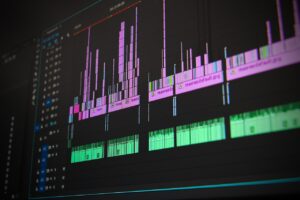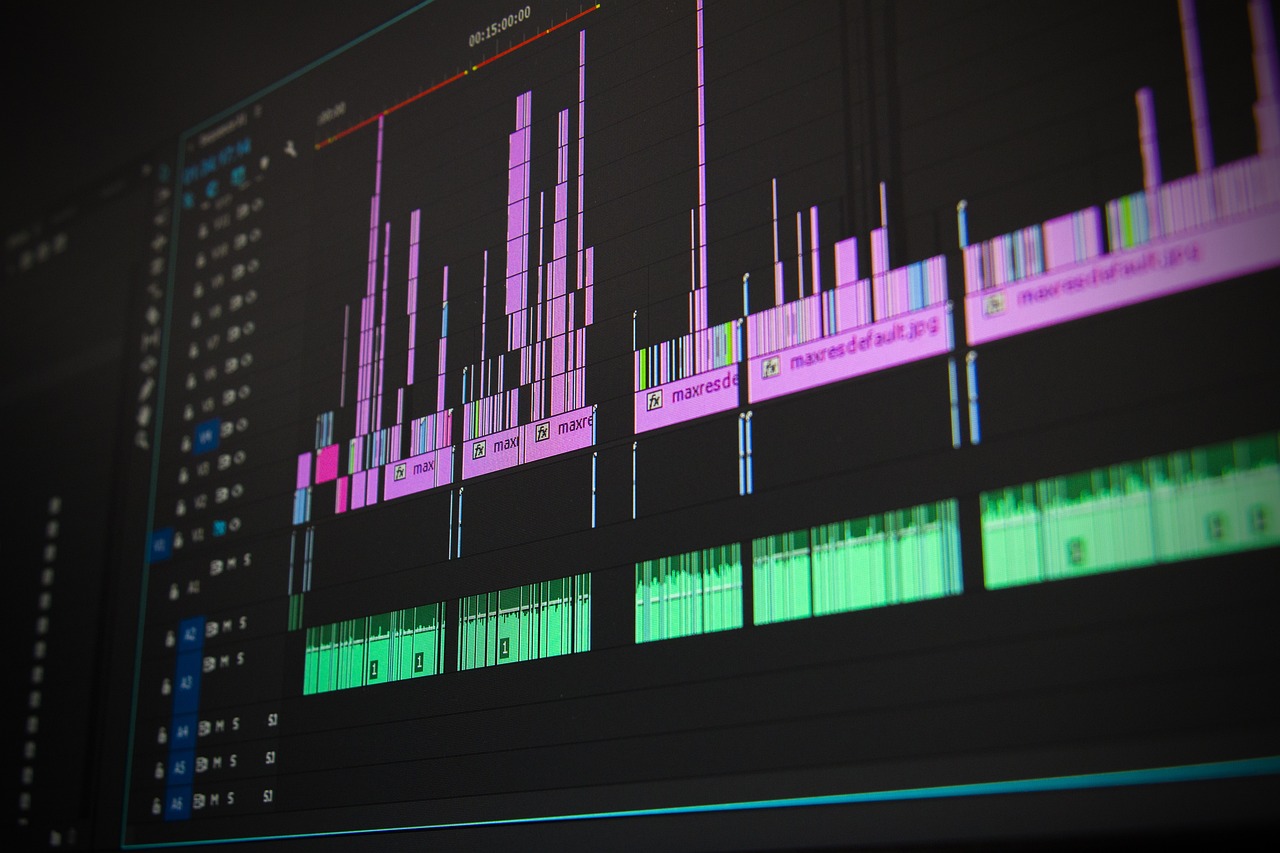In today’s digital age, where attention spans are shorter than ever and visual content dominates every platform—from Instagram reels to YouTube documentaries mastering video editing isn’t just a ‘nice-to-have’ skill. It’s your secret weapon.

Whether you’re an aspiring filmmaker, a social media creator, or a business owner trying to stand out, video editing is the magic glue that turns raw clips into captivating stories. Think about it: the same footage can feel amateur or cinematic—all based on how you cut, pace, and polish it.
Why This Guide?
This isn’t just another ‘how to edit’ manual. We’re giving you the full playbook:
From Zero to Pro: Start with basics (cuts, transitions) and advance to color grading, sound design, and VFX—no jargon, just actionable steps.
Tools for Every Budget: Whether you’re using free apps like DaVinci Resolve or Adobe Premiere Pro, we’ll show you how to max out their potential.
Storytelling Hacks: Learn how editors for Netflix, YouTube, and TikTok keep audiences hooked.
AI & Future Trends: Automate tedious tasks with AI tools and explore VR/360° editing—skills that’ll future-proof your career.
Real-World Gold:
- Case Studies: Break down edits from viral videos and why that 3-second pause made millions react.
- Workflow Tricks: How pros edit 10x faster shortcuts, presets, and mindset shifts.
- Monetization: Turn skills into income—freelancing, selling templates, or growing a brand.
The Transformative Power of a Comprehensive Video Editing Course
Imagine this: A truly transformative video editing course isn’t about grinding through software manuals—it’s about awakening your inner storyteller. This is where technical skill and creative vision collide, giving you the power to take those flickering ideas in your head and sculpt them into visual experiences that move people.
Why This Feels Different:
You’re not just learning how to edit—you’re learning why certain edits make hearts race or tears fall. It’s like being handed the keys to a secret language:
- The way a perfectly timed cut can make a joke land 10x harder
- How color grading doesn’t just look “cool”—it steers emotions
- Why some YouTube videos go viral while others flop (hint: it’s all in the rhythm)
Your Journey Unfolds Like a Film:
Act 1: Foundations
You’ll start by decoding the DNA of video itself—why 24fps feels cinematic but 60fps screams “live action,” how resolution changes storytelling, and why your phone shoots better footage than Spielberg’s first camera.
Act 2: Tools as Paintbrushes
Software isn’t just buttons—it’s your digital workshop. We’ll transform you from fumbling with timelines to:
- “Painting” with light using Lumetri Color
- Using sound design as an invisible emotional lever
- Faking Hollywood effects with budget hacks (that one lighting trick Nolan uses)
Act 3: The Hidden Psychology
This is where you become dangerous. You’ll learn:
- How to manipulate time (that Pulp Fiction effect where 5 minutes feel like 30 seconds)
- The exact millisecond when an audience subconsciously leans forward
- Why certain cuts trigger dopamine hits (TikTok editors know this instinctively)
The Grand Finale: Finding Your Voice:
The endgame? You won’t just make videos—you’ll speak through them. Whether it’s:
- A documentary that changes perspectives
- A brand film that actually sells without feeling “salesy”
- A YouTube video that people remember years later
Real editing mastery isn’t about the clips—it’s about the spaces between them. The pauses. The glances. The moments where you decide not to cut. That’s where the magic lives.
The Language of Visual Storytelling:
- Formats & Codecs Demystified:
- MP4 vs. MOV vs. AVI – Which one should you use and why?
- H.264 vs. ProRes vs. DNxHD – Understanding compression and quality trade-offs
- Why 24fps feels “cinematic,” 30fps is the broadcast standard, and 60fps is for high-action content
- Resolution deep dive: When to shoot in 4K vs. 1080p (and how to upscale properly)
- Aspect ratio psychology: How 16:9 became the standard, why 9:16 dominates social media, and when to use square (1:1) or anamorphic (2.39:1)
Software Bootcamp:
- Interface Mastery:
- Premiere Pro vs. DaVinci Resolve vs. Final Cut Pro – Which one is right for you?
- Customizing your workspace for maximum efficiency
- Timeline hacks: Keyboard shortcuts, track targeting, and magnetic vs. track-based editing
- Project Setup & Media Management:
- Organizing footage, proxies, and cache files like a pro
- Best practices for file naming and folder structures
- How to never lose work again (autosave & backup strategies)
Your First Edit:
- The “Invisible Cut” Principle: Making edits feel seamless
- Trimming Techniques: Ripple, roll, slip, and slide edits explained
- Basic Audio Sync & Mixing:
- Aligning dialogue with mouth movements
- Setting proper audio levels (-6dB to -3dB peak rule)
- Exporting 101:
- Bitrate, codecs, and containers – What YouTube, Instagram, and TikTok actually want
- How to avoid compression artifacts and pixelation
Intermediate Wizardry – Crafting Professional Edits
Advanced Editing Techniques
Multi-Cam Editing Mastery:
- Syncing footage from multiple angles (timecode, audio waveform, and manual sync)
- Switching angles for maximum impact (live events, interviews, and music videos)
Keyframe Animation & Motion:
- Smooth position, scale, and opacity animations
- Using graphs to refine easing (making movement feel natural)
Speed Manipulation Secrets:
- Slow motion vs. time remapping – When to use each
- Optical flow vs. frame blending – Avoiding the “choppy” look
Color Grading & Visual Polish
Color Correction Fundamentals:
- Fixing white balance, exposure, and contrast issues
- Using scopes (waveform, vectorscope, histogram) like a pro
Cinematic Color Grading:
- The psychology of color: Warm vs. cool tones
- Creating LUTs (Look-Up Tables) for a signature style
- Blockbuster looks: Teal & orange, bleach bypass, and vintage film emulation
Audio Post-Production:
Dialogue Cleaning & Enhancement:
- Removing background noise with Audition/Resolve
- Using EQ and compression for punchy vocals
Sound Design & Mixing:
- Layering ambient sounds for immersion
- The “Jaws effect” – Using sub-bass to build tension
- Foley hacks: DIY sound effects with household items
Music Editing Tricks:
- Cutting music tracks seamlessly (beat-matching and crossfades)
- Emotional scoring: How to pick the right track for the mood
Advanced Mastery – Hollywood-Level Techniques
Visual Effects (VFX) & Compositing
Green Screen & Chroma Keying:
- Lighting tips for the cleanest key
- Fixing spill and edge halos
Masking & Rotoscoping:
- Isolating objects for selective color grading
- Removing unwanted elements from shots
Motion Tracking & Stabilization:
- Attaching graphics to moving objects
- Smoothing shaky footage with Warp Stabilizer
Motion Graphics & Titles
Animated Text & Lower Thirds:
- Kinetic typography for engaging text
- Creating broadcast-quality lower thirds
Basic 2D Animation:
- Logo reveals and animated infographics
- Using expressions for automated animations
Professional Workflows & Career Growth
Building a Career in Editing
- Freelancing & Client Management:
- How to price your work (day rates vs. project rates)
- Contracts, invoices, and handling revisions
- Portfolio & Reel Tips:
- What to include (and what to leave out)
- How to showcase your best work in under 2 minutes
- Industry Networking:
- Finding gigs on Upwork, Fiverr, and LinkedIn
- Collaborating with directors and producers
You can Also visit my other articles on : CapCut, Premiere Pro, After Effects.
Click Here To Download
